A highly successful restart delivers a number of “firsts”.
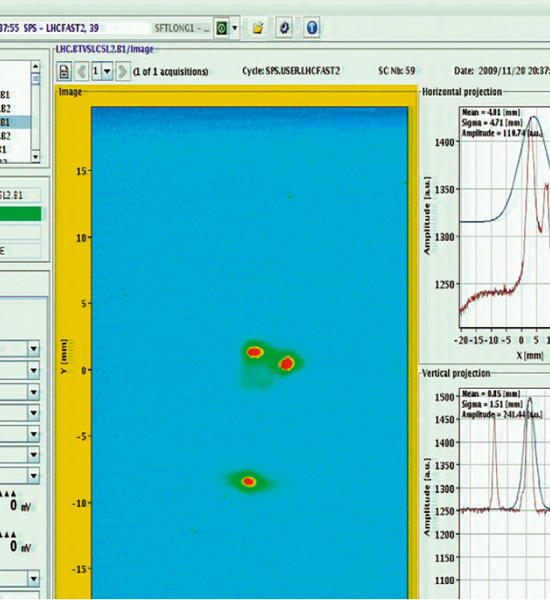
The moment that particle physicists – and many others – around the world had been waiting for finally arrived on 20 November 2009. Bunches of protons circulated once again round CERN’s Large Hadron Collider (LHC), a little more than a year after a damaging incident brought commissioning to a standstill in September 2008. As the operators put the machine through its initial paces, the collider passed a number of milestones – from the first collisions in the LHC detectors at 450 GeV per beam to collisions with “squeezed” multibunch beams at the world-record energy of 1.18 TeV. In addition, the collaborations collected sufficient data to calibrate their detectors and assess how well they perform before the real attack on high-energy physics begins later this year.
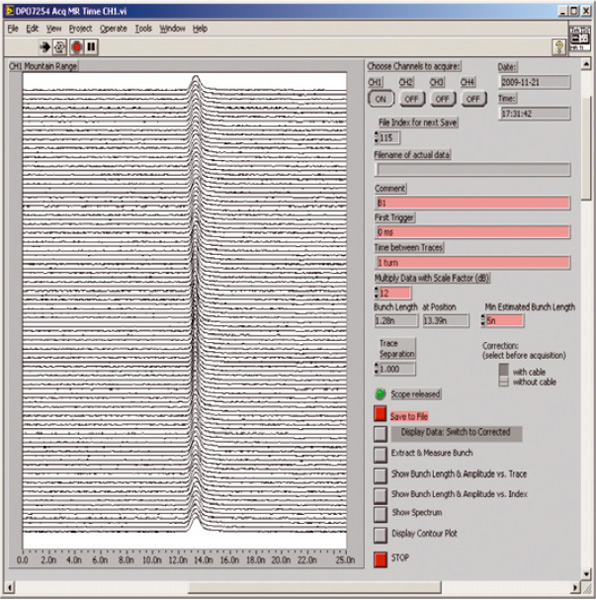
“It has been remarkable,” Steve Myers, CERN’s director for accelerators and technology, commented in a presentation to CERN Council and staff on 18 December. “Things have moved so quickly that it has been hard to keep up with the progress.” It was also the tip of an iceberg – a pinnacle of highly visible success built on a year of unstinting effort on repairs and consolidation work, painstaking hardware commissioning and the final preparation for operation with beam.
The restart finally got underway with the injection of both beams into the LHC on Friday 20 November and their careful threading round the machine, step by step, as on the famous start-up day in September 2008. There was jubilation in the CERN Control Centre as Beam 1 made its first clockwise circuits of the machine at 8.40 p.m. A little over an hour later, it had made several hundred circuits, captured by the RF. It was then the turn of Beam 2, which completed the first anticlockwise circuit at 11.40 p.m. and had also been captured successfully by the RF at a little after midnight.

During the following hours the four experiments were treated to special “splash” events, in which a single beam strikes a collimator nearby. These events produce an avalanche of particles that leave a host of tracks and allow the collaborations to check the relative timing of the detectors, for example.
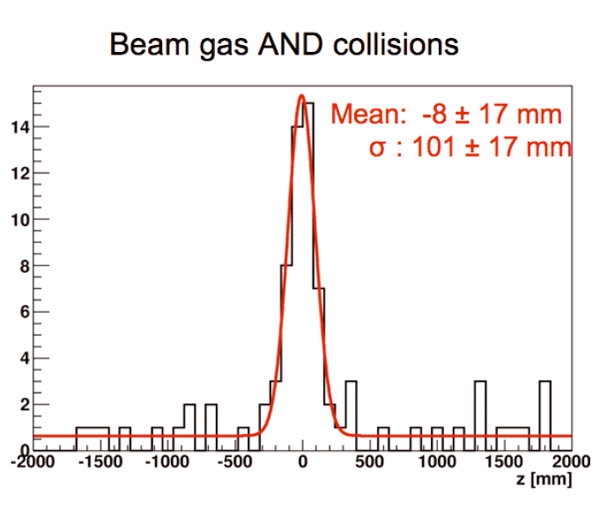
The first day already demonstrated that vital elements of beam instrumentation, such as the beam-position monitors and beam-loss monitors, were working well. Over the following weekend, the operators continued commissioning, in particular on Beam 1, including fine-tuning of the RF. This work already led to a good beam lifetime of around 10 hours, as measured from the decay of the beam current. Other key studies included measurements and refinements of the betatron tune (the frequency of transverse oscillations about the nominal orbit) and chromaticity (variations in the tune as a function of the momentum deviation). The tune of the machine immediately showed itself to be remarkably good, a testament to the many years of effort involved in the design and construction of the thousands of magnets that guide the beams round the 27 km ring.
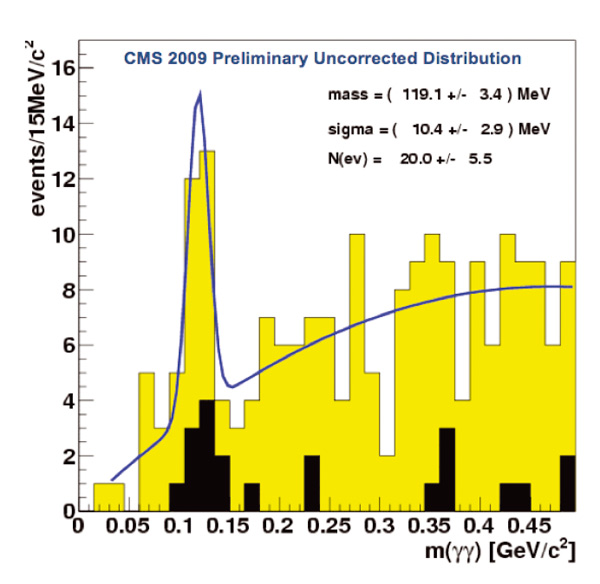
Monday 23 November saw the LHC reach a brand-new milestone when the two beams circulated simultaneously for the first time at 1.25 p.m. – just in time for an announcement at a press conference about the restart that was held at CERN at 2.00 p.m. The operators then adjusted machine parameters to provide the experiments with the first, real beam–beam collisions, each in turn.
ATLAS was first, with a collision event recorded at around 2.22 p.m. Four hours later it was the turn of ALICE, which immediately saw the trigger rate rise from about 0.001 to 0.1 Hz. Over the next 40 minutes the experiment recorded nearly 300 events. LHCb followed at about 5.45 p.m. This experiment found it less easy to confirm collisions because only the larger and more distant parts of the detector were switched on, but nevertheless the events collected showed indications of good-looking vertices. Soon after 7.00 p.m. the operators tried again for collisions in ATLAS and CMS, this time at a slightly higher intensity and with improved beam steering. CMS bagged its first collision at 7.40 p.m.
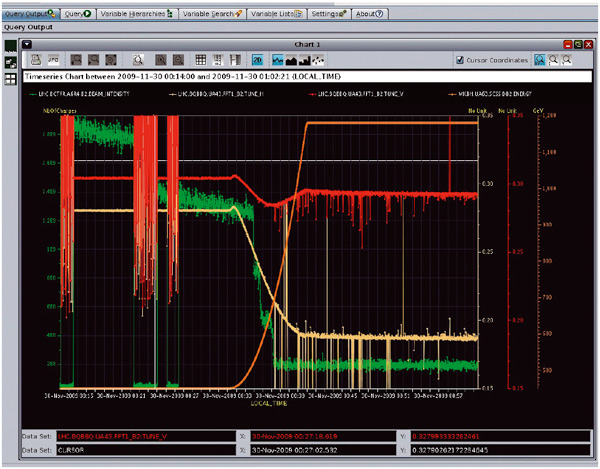
These first collisions were all obtained with a low-intensity “probe” beam, so called because it allows the operators to probe the limits of safe operation of the LHC with a single bunch per beam of only about 3 × 109 protons. Over the following days, probe beams were used in continued commissioning to ensure that higher intensities could be safely handled and stable conditions could be guaranteed for the experiments over sustained periods. Higher intensities would be needed for the experiments to acquire a meaningful amount of data but nevertheless the first period of collisions provided plenty to report on in presentations to a packed main auditorium at CERN on 26 November, just six days after the restart. There were measurements of timings, tracking, calorimetry, missing energy and plenty more from all four of the big LHC experiments, as well as reconstructions, including π0 peaks from LHCb and CMS.

During the first three days the LHC operated as a storage ring and as a collider, but at a beam energy of only 450 GeV – the injection energy from the SPS. An important next step was to begin tests to ramp the current and hence the field in the dipole magnets in synchrony with increasing beam energy (supplied by the RF). On 24 November, Beam 1 underwent the first ramp, reaching 560 GeV before it died away after encountering resonances in the betatron oscillations. Nevertheless, the LHC had worked as an accelerator for the first time.
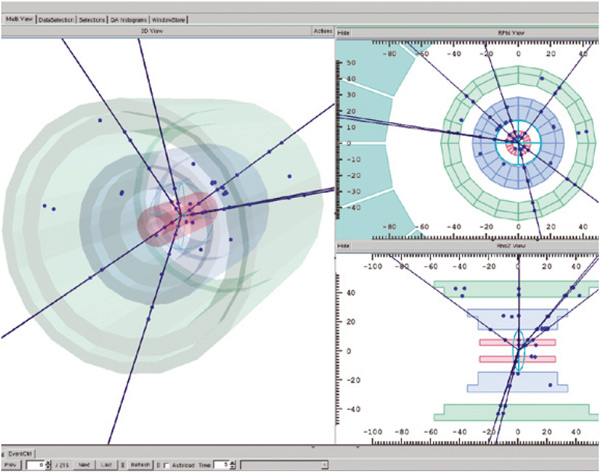
Further commissioning ensued, including energy matching between the SPS and the LHC on 27 November. Two days later, the operators were ready to try the first ramp to a world-record energy and at 9.48 p.m. on 29 November they accelerated Beam 1 from 450 GeV to 1.04 TeV. This exceeded the previous world-record beam energy of 0.98 TeV, which had been held by Fermilab’s Tevatron collider since 2001. Within three hours, the LHC had broken its own record, as both beams were successfully accelerated to 1.18 TeV at 0.44 a.m. on 30 November. This was the maximum energy for this first LHC run, corresponding to 2 kA in the dipole magnets – the limit to which the safety systems had been tested before the restart.

Later that same day tests began to study any effects that the solenoid magnets in the experiments might have on the beam orbit, which would need compensatory adjustments. ALICE was the first to ramp the solenoid field, followed by ATLAS and finally the biggest of the three, the “S” in CMS with its full field of 3.8 T. The effects were all small; indeed, changes in the orbit arising from earth tides at the time of the ramp in CMS proved to have a bigger effect than the field of the giant solenoid.
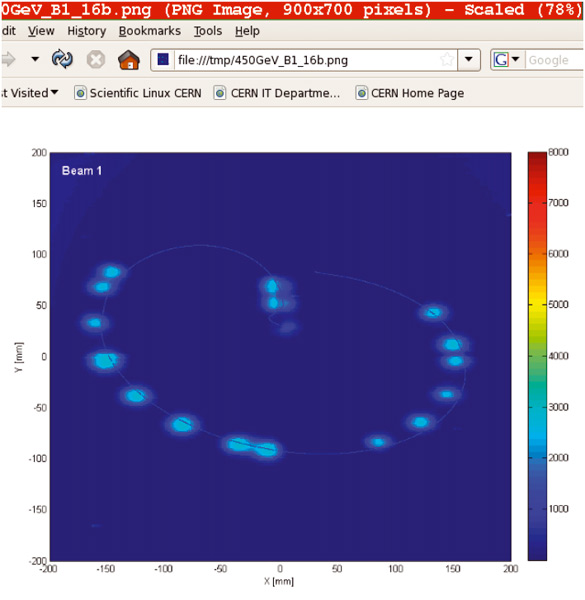
December began with a “first” of a different kind, when the ALICE collaboration, having analysed the 284 events recorded on 23 November, submitted the first paper based on collision data at the LHC for publication in the European Physical Journal C. The collaboration analysed the events to measure the pseudorapidity density of charged primary particles in the central region. The results are consistent with previous measurements made at the same centre-of-mass energy a quarter of a century ago, when CERN’s SPS ran as a pulsed proton–antiproton collider. The paper was accepted for publication two days later.

From 1 to 6 December the operations team continued with beam commissioning at 450 GeV, in particular with aperture scans to determine the operational space for beam manoeuvres and collimator scans to indicate the best settings for these devices, which are used to “clean” the beam by removing particles forming a halo around the main core. These studies are important for setting the parameters for the safe running of the machine – safe in the sense that the halo particles do not go off course into the LHC magnets or sensitive parts of the experiments.
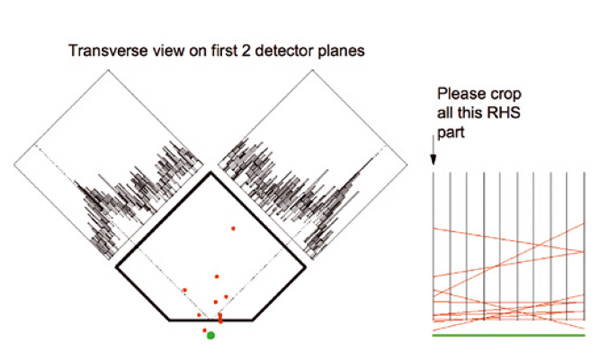
Other studies concern aborting a run safely and depositing the beams in the beam dump near Point 6 on the ring. During normal running, if the beam becomes unstable the beam-loss monitors should sense this and trigger a set of fast pulsed magnets to eject the beams along a tunnel to the beam stop. To avoid dumping all of the energy in a single spot on the dump face – which at full intensity would be around 360 MJ per beam – magnets along the tunnel spread out the beam so that it “paints” a circle when it arrives at the stop.

Preliminary investigations of this kind are all undertaken at low intensities with the probe beam. On 5 December the operators took a first small but significant step to higher intensity when they injected two bunches per beam into the LHC. Beam with four bunches each followed in the early hours of 6 December and, at 6.46 a.m., the operators declared the first period of “stable beams” at 450 GeV, with some 1010 protons per beam. This meant that the collaborations could switch on all parts of their detectors, including the most sensitive, collecting data at a rate of about 0.5 Hz. Ultimately the LHC will run with 2808 bunches per beam
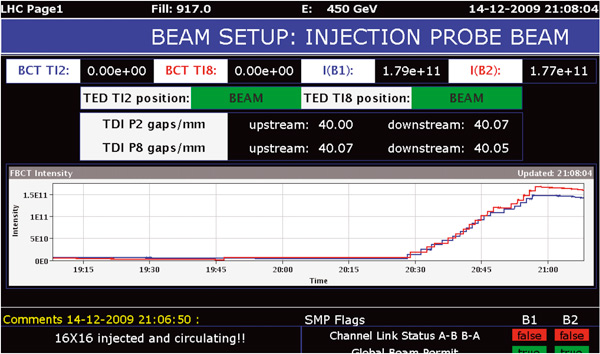
While the operators continued to take steps to increase the intensity – both through more bunches and with more protons per bunch injected from the SPS – stable running at 1.18 TeV also remained an important goal. A test ramp with two bunches per beam on 8 December gave ATLAS the chance to record a first collision at a total energy of 2.36 TeV, although at the time the experiment was in “safe” mode and many parts were turned off.

The continued careful studies with higher intensities led to a first period of stable beams at 450 GeV with higher bunch intensities on 11 December, this time with four bunches per beam and 2 × 1010 protons per bunch. This increased the event rates in the experiments to about 10 Hz, some 100 times higher than in the first tests on 23 November. Ultimately, at 9.00 p.m. on 14 December, the LHC began to run with stable beams with 16 bunches, providing some 1.85 × 1011 protons per beam – and trigger rates of around 50 Hz.
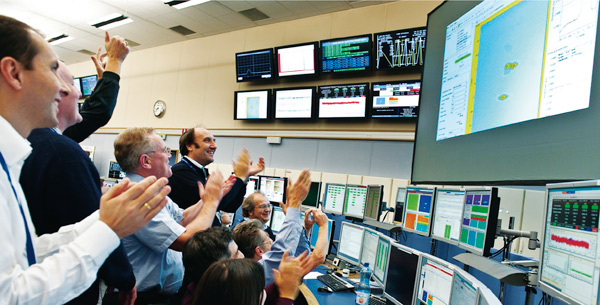
The four big experiments were eventually able to observe significant numbers of collisions with all of the subdetectors operational at a beam energy of 450 GeV under stable conditions, accumulating a grand total of 1.6 million events. LHCf, the small experiment that sits in the forward direction close to the ATLAS detector, amassed enough events for the collaboration to begin the first physics. This experiment, which is to study the production of showers of particles similar to those created in cosmic-ray showers, collected some 6000 showers at 900 GeV in the centre of mass.

In addition, progress with ramping on 14 December allowed the experiments to record collisions at a total energy of 2.36 TeV for the first time during a 90-minute period of stable beams, with two bunches per beam. Altogether, the four big experiments recorded some 125,000 events in this new energy region.
With the LHC run scheduled to end on the evening of 16 December for a shutdown for further consolidation work in preparation for running at higher energies, the last two days saw the machine revert to the operators for further commissioning studies. First there were tests on 15 December in which one of the TOTEM experiment’s delicate Roman pots was moved closer towards the beam to record the first track in the “edgeless” silicon detectors (CERN Courier September 2009 p19).
Finally, in the early hours of 16 December the beam experts were able to test the “squeeze” at the interaction regions. A squeeze involves reducing the beam size at the collision points by reducing (“squeezing”) the betatron function, β, which describes the amplitude of the betatron oscillations. With four bunches per beam, the machine ramped once again to 1.18 TeV, a squeeze to 7 m was successfully applied at interaction region 5, where the CMS experiment is located.
After further beam studies, at 6.00 p.m. the operators prepared to dump the beam for the last time in 2009, just as planned. This ended the first, highly successful full commissioning run for the LHC, which is being followed by a technical stop until February. While the LHC remains on stand-by, work continues to implement protection systems to allow high-energy running at up to 3.5 TeV per beam, as well as to make other modifications and repairs in the machine and the experiments. The first four weeks of running had brought plenty of success, auguring well for the future. After some time for celebrations over the festive season, it would be time to prepare for the next step in this great adventure.






2 Comments